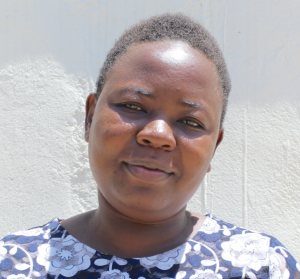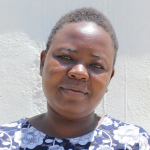Most families in Tumaini Community are Luyha tribe, Kabras sub-tribe. Many families have single parents either widowed or divorced. Many households have extended families living together with the grandparents, the parents, and children all living on the same land. Tradition here sees the role of women as birthers, and thus they are not allowed to use any family planning method. This means each family has between five to seven children.
The 140 people living in this area survive on farming. Whatever they harvest is used for the family first, while any excess is sold or traded in the local market. Some keep dairy cattle so that milk can be sold every morning and evening. A few men have been able to afford motorbikes that they use to taxi others for a fee.
However, the daily busyness to provide for the family or attend school for those living in Tumaini is often disrupted by illness. That is because people use dirty water from Ndombi Spring.
Ndombi Spring is open to all sorts of contamination and is not safe for human consumption. There is a lot of farming activity going on near the unprotected spring, and animals like dogs are seen around the area and they too must come to the spring to sate their thirst.
People dunk their containers directly under the water's surface to fill them. Many of these containers are dirty and further contaminate the spring. And as more people fetch water, the dirt at the bottom is stirred and muddies the water.
Most people using Ndombi Spring believe that water is clean as long as it is clear. They rarely treat the water before drinking and need to learn about how and why to do so. Most people have suffered from waterborne diseases and some have even lost a loved one because of the dirty water.
"We have suffered from diarrhea and typhoid as a result of drinking this contaminated water. By protecting this spring, our community will be protected from waterborne diseases in the future," said Emmanuel.
What we can do:
Spring Protection
Protecting the spring will ensure that the water is safe, adequate, and secure. Construction will keep surface runoff and other contaminants out of the water. There will be stairs down to the collection point and a pipe that can easily fill water containers. With the community’s high involvement in the process, there should be a good sense of responsibility and ownership for the new clean water source.
Fetching water is predominantly a female role, done by both women and young girls. Protecting the spring and offering training and support will, therefore, help empower the female members of the community by giving them more time and efforts to engage and invest in income-generating activities.
Training
People living here are not taking good care of themselves by washing their hands, and many readily admitted that.
Community members will attend hygiene and sanitation training for at least two days. This training will ensure participants have the knowledge they need about healthy practices and their importance. The facilitator plans to use PHAST (Participatory Hygiene and Sanitation Transformation), CLTS (Community-Led Total Sanitation), ABCD (Asset-Based Community Development), group discussions, handouts, and demonstrations at the spring. One of the most important topics we plan to cover is the handling, storage, and treatment of water. Having a clean water source will be extremely helpful, but it is useless if water gets contaminated by the time it’s consumed.
Training will also result in the formation of a committee that will oversee operations and maintenance at the spring. They will enforce proper behavior around the spring and delegate tasks that will help preserve the site, such as building a fence and digging proper drainage. The fence will keep out destructive animals, and the drainage will keep the area’s mosquito population at a minimum.
Sanitation Platforms
Less than a quarter of households using Ndombi Spring have a place to use the bathroom. When a family doesn't have a latrine, they try to share with their neighbor when they can. Others use the bathroom outside in the privacy of bushes. It is dangerous when waste is not disposed of properly like this, and it can affect the entire community.
The latrines we observed are made of mud and have sugar sacks hanging as a door.
On the final day of training, participants will select five families that should most benefit from new cement latrine floors.
Training will also inform the community and selected families on what they need to contribute to make this project a success. They must mobilize locally available materials, such as bricks, clean sand, hardcore, and ballast. The five families chosen for sanitation platforms must prepare by sinking a pit for the sanitation platforms to be placed over. All community members must work together to make sure that accommodations and food are always provided for the work teams.

 Protected Spring
Protected Spring
 Rehabilitation Project
Rehabilitation Project


































